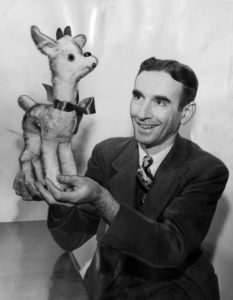Hollywood Blockbuster
 Michael Benjamin Bay (b. 1965) was born in Los Angeles and adopted by Jewish parents. A big lover of dogs, he donated his bar mitzvah gifts to an animal shelter. As a child, he once rigged a toy train with fireworks and recorded the explosion with an old camera. Although it caused a fire and got him grounded, Bay knew he was destined to make big blockbuster movies. At 15, he got a menial job filing storyboards for George Lucas on his production of Raiders of the Lost Ark. He went on to major in film studies and English, and did graduate work at Pasadena’s Art Center College of Design. Two weeks after graduating, he got a job to film commercials. His first breakthrough was a popular ad for Coca-Cola, followed by an ad for the Red Cross in 1992. His 1993 “Got Milk?” ad won an award for Commercial of the Year. Meanwhile, Bay directed a number of hit music videos. This caught the attention of Hollywood producer (and former Jew of the Week) Jerry Bruckheimer, who hired him to direct Bad Boys. This was Bay’s first feature film and was a massive success, making $141 million in the summer of 1995 alone (against a budget of just $19 million). The movie thrust both Bay and Will Smith to international fame. His next film, The Rock, was another huge hit, as was the following Armageddon with Bruce Willis, the highest-grossing movie of 1998 and nominated for four Oscars. Bay also got four Oscar nominations for Pearl Harbor. In 2007, Bay teamed up with Steven Spielberg to make Transformers, another huge blockbuster that launched an entire film franchise. In 2018, he directed 6 Underground, then Netflix Studio’s largest-ever production. Bay has recently ventured into augmented and virtual reality games and films. While some have criticized his movies for being too childish, outlandish, and explosive, others have praised his artistry, ambition, and vision. Altogether, his films have raked in over $7 billion, putting him in the top-5 highest grossing directors of all time.
Michael Benjamin Bay (b. 1965) was born in Los Angeles and adopted by Jewish parents. A big lover of dogs, he donated his bar mitzvah gifts to an animal shelter. As a child, he once rigged a toy train with fireworks and recorded the explosion with an old camera. Although it caused a fire and got him grounded, Bay knew he was destined to make big blockbuster movies. At 15, he got a menial job filing storyboards for George Lucas on his production of Raiders of the Lost Ark. He went on to major in film studies and English, and did graduate work at Pasadena’s Art Center College of Design. Two weeks after graduating, he got a job to film commercials. His first breakthrough was a popular ad for Coca-Cola, followed by an ad for the Red Cross in 1992. His 1993 “Got Milk?” ad won an award for Commercial of the Year. Meanwhile, Bay directed a number of hit music videos. This caught the attention of Hollywood producer (and former Jew of the Week) Jerry Bruckheimer, who hired him to direct Bad Boys. This was Bay’s first feature film and was a massive success, making $141 million in the summer of 1995 alone (against a budget of just $19 million). The movie thrust both Bay and Will Smith to international fame. His next film, The Rock, was another huge hit, as was the following Armageddon with Bruce Willis, the highest-grossing movie of 1998 and nominated for four Oscars. Bay also got four Oscar nominations for Pearl Harbor. In 2007, Bay teamed up with Steven Spielberg to make Transformers, another huge blockbuster that launched an entire film franchise. In 2018, he directed 6 Underground, then Netflix Studio’s largest-ever production. Bay has recently ventured into augmented and virtual reality games and films. While some have criticized his movies for being too childish, outlandish, and explosive, others have praised his artistry, ambition, and vision. Altogether, his films have raked in over $7 billion, putting him in the top-5 highest grossing directors of all time.
The Intersection of Science and Mysticism
Words of the Week
We must no longer isolate ourselves from the great scientific movement that stirs souls in so many ways; [Judaism] can remain orthodox only by becoming scientific.
– Rabbi Elijah Benamozegh (1823-1900)


